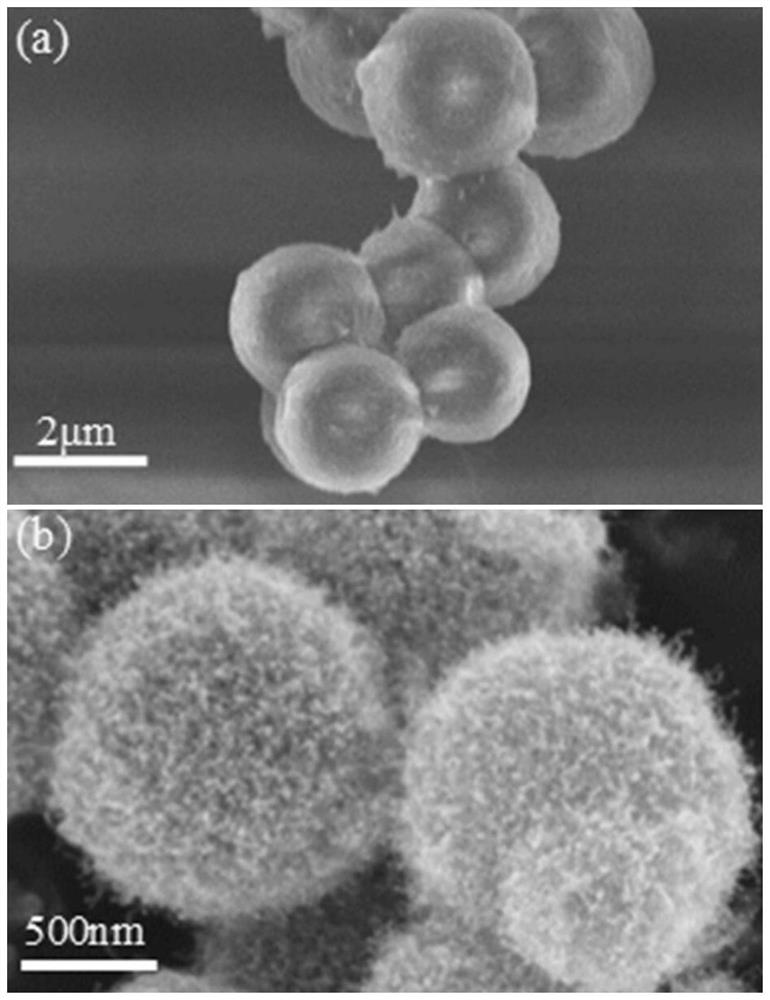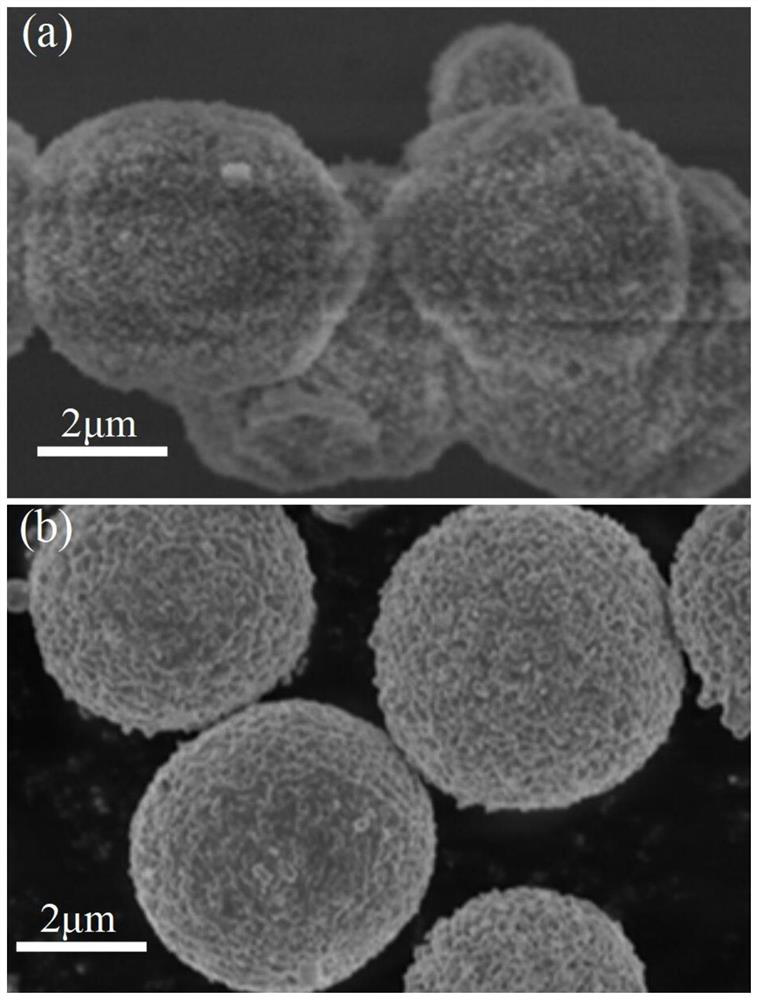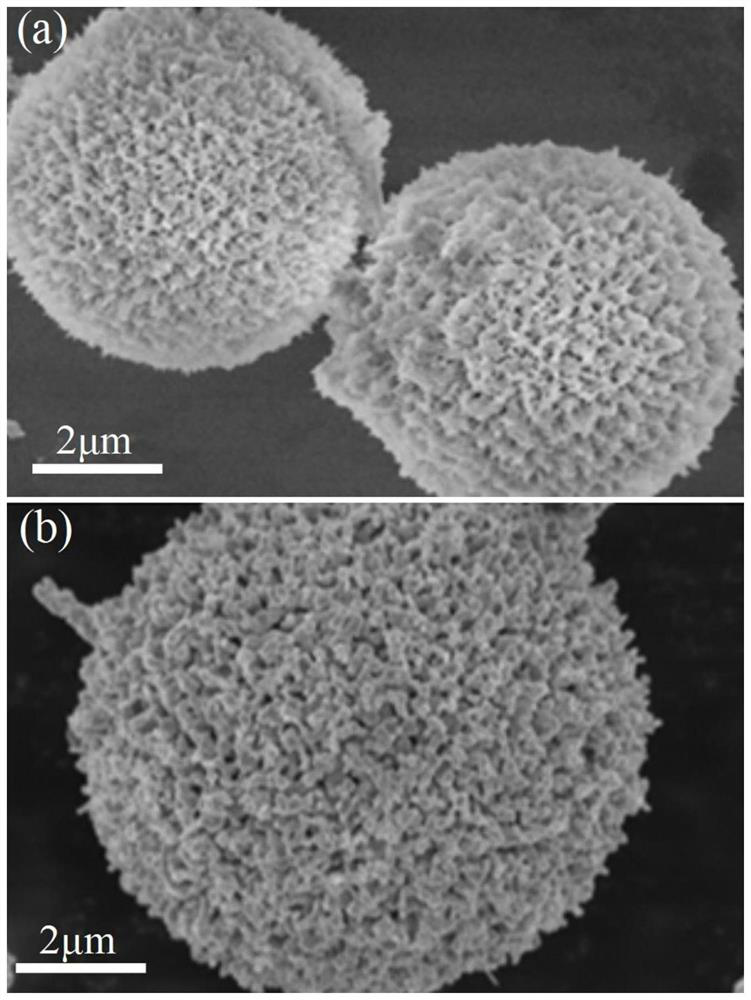Metal-carbon composite particle and preparation method and application thereof
A carbon composite and particle technology, which is applied in metal processing equipment, carbon preparation/purification, nano-carbon, etc., can solve problems such as difficulty in meeting practical application requirements, impossibility of large-scale promotion and application, poor impedance matching performance, etc., and achieve excellent microwave Good absorption performance, weight reduction, and good impedance matching
- Summary
- Abstract
- Description
- Claims
- Application Information
AI Technical Summary
Problems solved by technology
Method used
Image
Examples
Embodiment 1
[0036] A kind of Ni-C composite particle, its preparation method comprises the following steps:
[0037] 1) Disperse 3mmol of nickel chloride hexahydrate and 0.3g (1.428mmol) of trimesic acid in 60mL of solvent (by N,N-dimethylformamide, ethanol and water in a volume ratio of 1:1:1 composition), stir until the solids are completely dissolved, then transfer the material to a high-pressure reactor, react at 150°C for 10h, centrifuge, and wash the solid obtained by centrifugation with methanol for 3 times, and then dry it under vacuum at 70°C for 12h to obtain Ni base MOF;
[0038] 2) The Ni-based MOF was calcined at 500° C. for 3 h in a nitrogen atmosphere to obtain Ni-C composite particles.
[0039] The scanning electron microscope (SEM) figure of Ni-based MOF and Ni-C composite particle in the present embodiment is as follows figure 1 (a is Ni-based MOF, b is Ni-C composite particles).
[0040] Depend on figure 1 It can be seen that the Ni-based MOF presents a smooth and c...
Embodiment 2
[0042] A kind of Ni-Co-C composite particle, its preparation method comprises the following steps:
[0043] 1) Disperse 2mmol of nickel chloride hexahydrate, 1mmol of cobalt chloride hexahydrate and 0.3g (1.428mmol) of trimesic acid in 60mL of solvent (made of N,N-dimethylformamide, ethanol and water According to the volume ratio of 1:1:1), stir until the solid is completely dissolved, then transfer the material to a high-pressure reactor, react at 150°C for 10h, centrifuge, and wash the solid obtained by centrifugation with methanol for 3 times, and then in a 70°C Drying under vacuum condition for 12h, to obtain Ni-Co-based MOF;
[0044] 2) The Ni-Co-based MOF was calcined at 500° C. for 3 h in a nitrogen atmosphere to obtain Ni-Co-C composite particles.
[0045] The SEM images of Ni-Co-based MOF and Ni-Co-C composite particles in this example are as follows figure 2 (a is Ni-Co-based MOF, b is Ni-Co-C composite particles).
[0046] Depend on figure 2 It can be seen tha...
Embodiment 3
[0048] A kind of Ni-Co-C composite particle, its preparation method comprises the following steps:
[0049] 1) Disperse 1.5mmol of nickel chloride hexahydrate, 1.5mmol of cobalt chloride hexahydrate and 0.3g (1.428mmol) of trimesic acid in 60mL of solvent (from N,N-dimethylformamide, ethanol and water according to the volume ratio of 1:1:1), stir until the solid is completely dissolved, then transfer the material to a high-pressure reactor, react at 150°C for 10h, centrifuge, and wash the solid obtained by centrifugation with methanol for 3 times, and then at 70 Dry under vacuum condition at ℃ for 12h to obtain Ni-Co-based MOF;
[0050] 2) The Ni-Co-based MOF was calcined at 500° C. for 3 h in a nitrogen atmosphere to obtain Ni-Co-C composite particles.
[0051] The SEM images of Ni-Co-based MOF and Ni-Co-C composite particles in this example are as follows image 3 (a is Ni-Co-based MOF, b is Ni-Co-C composite particles).
[0052] Depend on image 3 It can be seen that the ...
PUM
| Property | Measurement | Unit |
|---|---|---|
| diameter | aaaaa | aaaaa |
| diameter | aaaaa | aaaaa |
| diameter | aaaaa | aaaaa |
Abstract
Description
Claims
Application Information
 Login to View More
Login to View More - R&D
- Intellectual Property
- Life Sciences
- Materials
- Tech Scout
- Unparalleled Data Quality
- Higher Quality Content
- 60% Fewer Hallucinations
Browse by: Latest US Patents, China's latest patents, Technical Efficacy Thesaurus, Application Domain, Technology Topic, Popular Technical Reports.
© 2025 PatSnap. All rights reserved.Legal|Privacy policy|Modern Slavery Act Transparency Statement|Sitemap|About US| Contact US: help@patsnap.com



